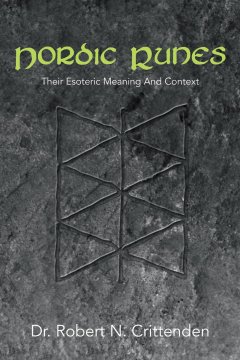History
Showing 1–10 of 13 results
-

A History of Orthopedics
A HISTORY OF ORTHOPEDICS portrays the beginning of orthopedic surgery from ancient times to the current era. It follows the gradual development of a specialty from Egypt to the European continent and England and from there to the United States of America. After the discovery of anesthesia and x-rays in the 19th century, a more rapid development of surgical endeavors led to the current situation where arthroscopy could view and treat deranged joint mechanics, and painful arthritic joints could be replaced. Many of the important persons who helped reach this current state are listed with their contributions. Whereas in the 19th century orthopedic surgery was still considered part of general surgery, in the 20th century the two specialties became separated. In addition, there was a struggle between conservative practitioners (the “Strap and Buckle” doctors) and those who felt surgical intervention provided better results.
About the Author:
Retired Orthopedic Surgeon Justin Howland practiced orthopedics in Redding, California for 28 years. After graduating from Yale University, he received his MD degree from N.Y. Medical College. He interned at Kaiser in San Francisco, and his residency was at Fitzsimons in Denver. After a tour in Europe and a stint as Chief of Orthopedics at Fort Dix, N. J., he and his family (five children) returned to California.
$2.99–$29.10 -

A War Not Won: A tribute to the men of the Army Combat Engineers who courageously served their country during the unpopular Vietnam War.
A personal account of the courageous men of an Army Combat Engineer Battalion during our most unpopular war. They faced constant danger from enemy attacks as they cleared jungles, built roads and bridges through dangerous Viet Cong sanctuary areas, built airfields and fire support bases, cleared mines and booby traps, and lived through nightly enemy mortar and rocket attacks only to push further into Viet Cong held territory the next day. They were combat engineers in the finest tradition of the United States Army.
About the author:
General Peixotto is a 1951 graduate of the U.S. Military Academy, earned a Masters Degree from the Massachusetts Institute, is a graduate of the Command and General Staff College, and the National War College. He served two tours in Vietnam. The first as an advisor to the Vietnamese Army in 1959 and 1960. He returned to Vietnam in 1968 to command the 86th Combat Engineer Battalion. He retired from the Army in 1984 with the rank of Lieutenant General.
$3.00–$13.00 -

Anacostia Flats
There was a time in our country's history when America stood on the brink of Armed Revolution. The time was not 1776 or 1860 it was 1932.
Over three months during an explosively hot summer, driven to desperation by years of unemployment, tens of thousands of battle-hardened American veterans and their families descended on Washington, DC and refused to leave.
Commanded by Walter W. Waters, an enigmatic man who rose from obscurity to the status of a national hero, this veterans' army could have opened the door to communist or fascist forces overpowering the nation's government. One night, on the steps of the Capitol building, it nearly happened.
Determined to teach the veterans a lesson and to demonstrate the need for a strong armed force, Chief of the Army Douglas MacArthur and his top aides, mid-career officers Dwight Eisenhower and George Patton, made secret plans to drive the veterans from Washington by force.
$16.54 -

Cameroon Aspects of A Democracy
This book is made up of short notes on aspects of the political life of Cameroon. Arranged in the alphabetical (rather than in the chronological) order, the events discussed here, bring to the fore many of the happenings which have culminated in the war that is ravaging the country today. Added to these is also an addendum of other pieces of writings about the ongoing political crisis in the country which started not very long after the so-called reunification of La République du Cameroun and the former British Southern Cameroons.
About the Author:
The author was born and raised in what was then called the Southern Cameroons. After studying abroad, he returned to Cameroon and worked in the private sector for several years before relocating to the United States of America, where he now teaches economics as an adjunct professor. He is the author (or translator) of several books, including one on the problems of economic development.
$2.99–$11.96 -

Four Princesses from Provence
During the Middle Ages noble women were often pawns in the great game of dynastic politics. But some of them were important players in their own right. The four daughters of the Count of Provence used their charms, beauty, and intelligence to move from their father’s small kingdom in the south of France to positions of power across Europe. Marguerite, Eleanor, and Sancha became queens of France, England, and the Kingdom of Sicily. They followed their husbands to new homes where they gave their new lands children and a family life. But the fourth daughter, Beatrice, was different. The man she loved was a political enemy; the man she married was an indifferent and self-absorbed prince who made it clear that political intrigue was more important to him than the love of a gentle and romantic girl from another country. The only happy moments Beatrice enjoyed were spent in secrecy with her lover. But the stakes of her emotional attachment were high and the dangers of a misstep were always great. Based on research into the history of Europe in the thirteenth century and on travel to all of the destinations where these princesses lived, this novel depicts a crucial period as Europe emerged from the slumber of the Dark Ages and began to awake slowly to the promise of modern life.
About the author:
Amelia Rogers was born in Italy where she spent her formative years studying the classics, linguistics, and European history and literature at the Lycee and University before going on to advanced studies in language in Geneva, Switzerland and Cambridge, England. She came to the United States as the bride of an American businessman and university professor. Over the years, she has built on her knowledge of Classical Linguistics and European History with extensive travel to historical sites in Europe and the Middle East. She has taught Latin, World History, and Literature at a local college in Massachusetts for some ten years and spends part of each year at her home in Paris.
$12.99 -

How Things Fell Apart: A Short History of South Africa 1488 to Present Day
In How Things Fell Apart – A Short History of South Africa – 1488 to Present Day, John H. Glover reveals the source of Apartheid and the racial struggles of the indigenous South Africans. Africans, their struggles with the European for political justice and freedom, and their denial of equality in the South Africa Parliamentary system and its society. John used letters written by European South African Politicians to show the fights of the indigenous South Africans and what they were up against, such as Percy A. Molteno, James Rose-Innes, J. X. Merriman, and Sir Alfred Milner, British Governor of Cape Colony, who wrote to Rev. James Green on December 12, 1901: ” . . . As for the indigenous South Africans, one thing which appears to me quite evident is that a distinction must be drawn in the case of the natives between personal and political rights. A political equality of white and black is impossible . . . in any South African Parliament the interests of the blacks should be specially represented . . . this could be best done by white men, not elected but nominated for that particular purpose . . . As regards to personal rights, I hold that those of the natives should be just as clearly defined, and just as sacred as those of the white men. I do not, however, think that they need always be, or ought always to be the same. . . . How Things Fell Apart – A Short History of South Africa also reveals the indigenous South African politicians such as Walter Benson Rubusana and John Tengo Jabavu, and their struggles to combat political injustice and apartheid.
$4.99 -

In Extremis: Are the Passengers Safe?
By Robert Meurn
The sinking of the Andrea Doria on July 25, 1956, was devastating as the ship embodied the vibrant heart and soul of Italian heritage and its people. The sinking marked the twilight of the ocean liner as a significant means of passage across the oceans. Within a year of this tragedy, transoceanic flights were routinely scheduled. The Stockholm’s destruction of Italy’s beautiful maritime crown jewel had ramifications throughout the world. What really caused the collision between the Andrea Doria and Stockholm off Nantucket on that foggy night of July 25th? Years of controversy followed. Was it foggy or clear? How could two vessels equipped with radar collide? Was the approach of the vessels right to right (starboard to starboard) end on or left to left (port to port)? Why did a New York inquiry end so quickly with an out of court settlement? How did false accusations, prejudices and books such as “Collision Course” obscure the facts? Why did Captain Calamai of the Andrea Doria become the scapegoat for the collision? In Extremis is a factual accounting of this disaster that will not only answer these questions but also demonstrate the fatal error made by the Stockholm. Unlike the Titanic, it became the greatest sea rescue in history.
About the author:
Robert J. Meurn, Master Mariner and Captain, USN Ret., is a graduate of the U.S. Merchant Marine Academy and George Washington University. He is an author of three previous books on maritime safety and recipient of three Teacher of the Year awards. He also has received the Department of Transportation Bronze Medal and was the first ever recipient of the Distinguished Service Medal for his contributions to maritime safety. Currently he is Professor Emeritus at the United States Merchant Marine Academy.
$15.05 -

Nordic Runes: Their esoteric meaning. And context.
The Nordic runes are taken off an ancient model for the structure of an Indo-European's mind. It is called Yggdrasil. That model was known to the ancient Greek philosophers, it underlies Gnosticism and Alchemy and it is consistent with Yoga and Hinduism. The common factor is that all of these peoples were Indo-Europeans. Explaining this model and the esoteric meaning of the runes is the principle purpose of this book. It also puts the runes' development into their historical context. The contemporary importance of this model is that it underlies Carl Jung's work in psychology, and also tells how to reach the highest level of person development.
About the Author
My ancestors were of English and Danish origins Consequently, they were Pagans for many generations, So, if ancestral memory exist, I may have them. Nevertheless, they were in North America since colonial times and I was raised an Episcopalian in a family that was of that denomination for many generations. So, I have strong conscious connections to the Anglo-American, English, and enlightenment traditions. My professional training was in biology, statistics and modeling and my job experience has been in consulting mostly on biology-related public policy issues. I have written one book on history and many reports on public policy issues.$12.64–$22.55 -

The Executioners
The Executioners is a book that covers several Armenian related subjects. The main theme is about the executioners who assassinated the Ottoman Turkish perpetrators of the Armenian Genocide and how
they went about accomplishing their assignments. The other contents include a short history of Armenia, the events of Bank Ottoman, the foundation of Operation Nemesis, and what is going on in Turkey, Armenia, and Azerbaijan today. Operation Nemesis was the secret organization that formed after World War I to execute the perpetrators of the Armenian Genocide. These were the same Ottoman Turks who were condemned to death by their own Courts-Martial but were able to flee to safe havens until the commandos of Operation Nemesis caught up to them and execute them.About the Author:
George Mouradian by profession is an engineer, yet also a history enthusiast. He is an American born Armenian who has researched Armenian history since his high school days, taught and was principal of
Armenian Sunday School classes, lectured on Armenian and Genocide subjects, and has been very active in the Armenian community affairs. His job skills relate more to quality and reliability engineering
than they do to history, but he has a love of the past and wanted to do something that could help others who are also interested. He has written several books on Armenian history and culture and on engineering, and has taught Reliability Engineering and Quality Management at the American University of Armenia. He wrote The Executioners because he wanted to tell the world about the Armenian Genocide and the avengers who tracked down the Ottoman Turkish culprits who killed the Armenians, Greeks, and other Christians. In addition, he wanted readers to learn about happened at
Bank Ottoman, the Hamidiye Massacres of 1894-1896 and the founding of Operation Nemesis, the organization that formed to execute the perpetrators of the Armenian Genocide. George is also concerned with what is going on, in and among, Turkey, Armenia, and Azerbaijan today. The potential dynamics of the future are immense.$2.99–$10.96 -

The Life of Levi
Levi is a man beset by problems. While he is wealthy, his riches are always being threatened in many different ways. As a Tax Collector for the Roman Empire, he is shunned by his fellow Jews as being ritually impure, and so all Jews want to cheat him out of tax money. Being shunned deeply wounds Levi, because he had once dreamed of being a Rabbi. He had studied in Jerusalem under the great teacher, Gamaliel, but was out shone by a fellow student, whom he hated, Paul. Compounding things, Levi also knows that the Roman Prefect, Pontius Pilate, is soon to come to visit him, probably with the intention of charging him much more money to purchase the tax contracts for the toll booth at Capernaum. His brother, James, who is a fisherman, with his partner, Peter, keeps nagging him to come and listen to an itinerant preacher, Jesus, whose message is that the wealthy should give all their riches to the poor. Finally, his wife, Miriam, who loves to spend money on luxury items and dreams of visiting Rome, probably married him only for his wealth and may have a roving eye. Meanwhile, there are bandits, led by Iscariot, in
the desert threatening the caravans hauling spices, silk, and other precious luxury goods, which produce the enormous tolls at Levi’s toll booth. When his best friend, a Greek merchant named Maes, arrives in Capernaum with his huge caravan, which arrival should have solved most of Levi’s problems, everything in Levi’s life comes apart. What can put Levi’s life together again?About the Author:
William D. McEachern lives in Palm Beach Gardens, Florida with his wife. He is a father and a grandfather. Mr. McEachern matriculated fromDuke University, earned his Law Degree from Fordham University School of Law, and a Master’s in Law Degree in Taxation from New York University School of Law. He has practiced law for 41 years, but now devotes almost full time to being a historian, writing novels of historical fiction and lecturing on historical topics. An avid reader of history, he thoroughly researches and travels extensively to lend authenticity and realism to his works. Returning to the world of Casting Lots, Mr. McEachern before writing The Life of Levi re-examined in depth numerous translations of the Gospel of Matthew, the latest archaeology of the Sea of Galilee region, including Capernaum, and visited numerous places in the Ancient Roman Empire and museums pertaining thereto. Mr. McEachern’s first novel, Casting Lots, which was the life story of the Centurion who presided over the Crucifixion, and which garnered excellent reviews, is continued in The Life of Levi. Mr. McEachern’s last two
novels, New Caledonia: A Song of America and Caledonia Lost: The Fall of the Confederacy were both selected as Finalists for the Best Historical Fiction for the Year 2017 and 2018. Caledonia Lost: The Fall of the Confederacy is also rated 4 stars out of 4 stars by the Online Book Club.$2.99–$33.75

